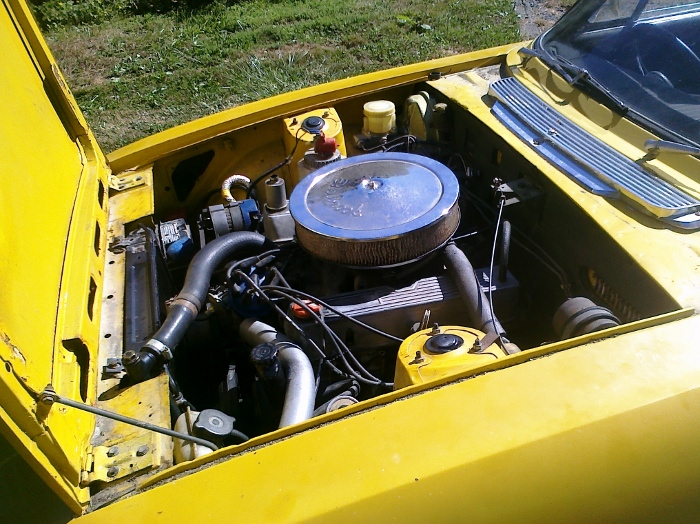I’ve had six Triumph Stags now. I currently have three, and none of them are driveable. I haven’t driven one (legally) on the road since 2004. They are a nightmare from every single conceivable angle, and any sane person would run a mile from them.
However, last week I did this.
This is a ’71 Stag. It’s supposed to be Carmine Red, but some genius has had it resprayed in a hideous pink/red metallic flip, and then sanded a bunch of it down where the paint guy took a tea break. It’s got its original drivetrain, the interior is fairly good, and the soft top hasn’t seen an erection since 1981.
Unfortunately, seeing as it’s got its original drivetrain, it doesn’t run right. It would barely cough and wheeze its way onto a trailer last month, and the previous “owner” had a bunch of head work done in order to fix a problem that’s nothing to do with the head. Fortunately, I no longer have to worry about burnt exhaust valves – instead, I have to deal with a blown water pump graphite seal, different height head gaskets, a badly-skimmed inlet manifold, and a front choke secured with zip ties.. and that’s before I get to any of the obstacles British Leyland or Lucas put in the way of being the world’s best car.
Clarkson has a point. The Triumph v8 is a total dog of an engine. Sure, in running order, it’s fantastic.. and to some extent, the problems are well understood and fixes are available.. but for most people, ripping the damn thing out and stuffing a small block Chevy in there is the obvious option. Ignoring the enormous weight difference, it is far simpler to work on.
The more obvious global fix is the Rover v8 – which probably should’ve been in there in the first place – and sheer pigheadedness is what prevented it from being in there in the first place. Go British Leyland, eh.







